1877 Odhner Arithmometers - the Smithsonian's treasures!
Obviously, the machines featured in this story are not part of my own collection.Do make sure to scroll all the way to the bottom and click the link for a small bonus ...
When I was in Washington D.C. during December 2006, I decided it would be an excellent opportunity to try and have a peek at the 2 elusive 1874/1879 patent Odhners that have their home in the National Museum for American History of the Smithsonian Institution. Unfortuntely, the NMAH was closed to the general public due to reconstruction. Since the machines are usually not on display to the public anyway, and the storage space was not affected by an overhaul of the public section of the museum, I decided to email the curator, dr. Peggy Kidwell, whether it would be possible to see these machines up close. She was very nice, and invited us over to visit the museum. I explained to her that I was interested in these machines because they were not well documented at all, apart from the patent information. For this reason, it would be excellent to be able to photograph them in detail.
In the mean time the Smithsonian Museum of American History has improved their online collections search somewhat, and there are now descriptions and pictures from the machines available online. This is machine n° 5:
Whereas machine n° 9 only shows a pre-restoration picture (which is interesting in itself to compare) :
The two machines in the Smithsonian are most probably part of the prototype series of 14 calculators that went into production at the Nobel factory in 1877, and were sent to the US in early 1878 according to Odhner's letter to Hjalmar Odhner, dated March 18th, 1878 (Timo Leipälä, The life and works of W.T. Odhner).
With the two collegues with whom I was visiting D.C. in tow, we entered the back entrance of the museum and were met by dr. Kidwell. We then crossed through the public area of the museum (which was clad mostly in plastic due to the reconstruction and building work going on) at a brisk trot, to end up in the study area attached to the museum depot. Both Odhner's arithmometers were brought out of storage for me to have a good look at and take some detail photographs. One machine at a time was put into a large white-bottomed cardboard box, I was provided with white cotton gloves and a screwdriver, and allowed to take the machines apart as far as necessary in order to photograph whatever I would like. It should be noted that this situation was exceptional, because now that the museum is open to the general public again, staff shortages do no longer allow this sort of access to the collection for visitors - these pictures will have to do for now.
The pinwheel cylinder in these machines sits loose in split bronze bearings, and can be taken out very easily, as soon as the single screw that holds the housing together is undone. Both machines were put together wrongly, so I managed to rectify that in the process of dis- and reassembly, and to leave the NMAH with two working 1877 Odhner's Arithmometers (as in, I left them there in working condition, although I wouldn't have minded at all to take them with me!).
The machines have a very solid positive action, not unlike the clickety feel of very early Triumphators, which have pinwheel cylinders that are almost as large. The basic functions of the machines are all in order, and it is perfectly feasible to calculate with them. Clearing the result and counter register works without fault.
As detailed in the 1916 letter to Dorr E. Felt that accompanies the first machine in the wooden box, it was used daily by Mrs. Wollard, the former secretary of the actuary of the treasury, Prof. Ezekiel Brown Elliott, and this until her death in 1915. Incidentally, it seemed to have been more to the liking than Baldwin's machine, which had also been demonstrated to Brown as early as in 1875, and a number of specimens of which were used in the Treasury as well. The machine was bought by Dorr E. Felt, and finally gifted to the Smithsonian by the Victor Comptometer corporation in 1963.
This arithmometer (serial number 5, not 4 as mentioned in Timo Leipälä's article) remains unrestored.
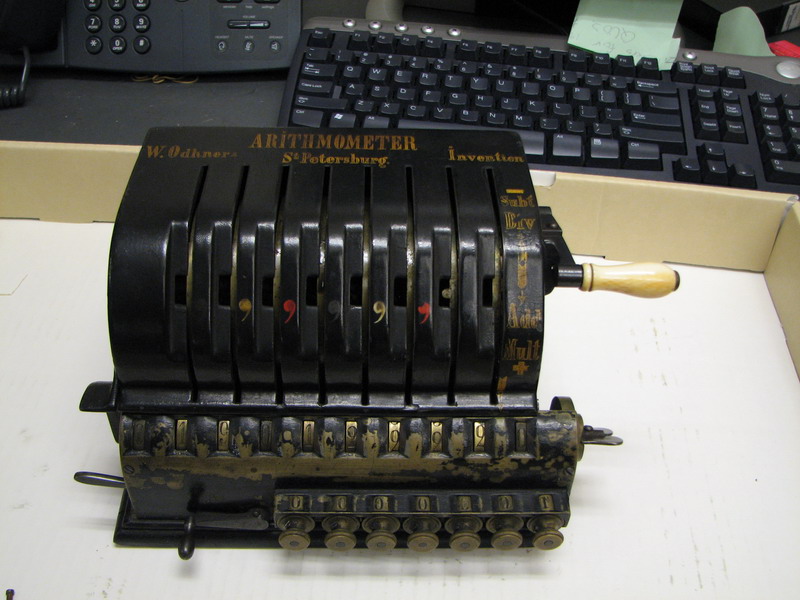
Misassembled Odhner's Arithmometer N°. 5

W. Odhner's Invention - ARITHMOMETER - St. Petersburg.
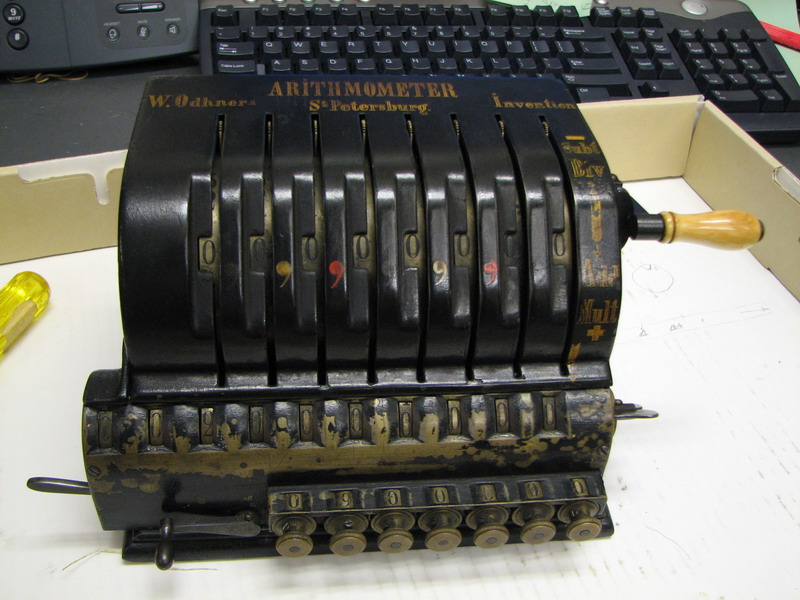
Reassembled correctly - ready for calculation! The machines are 8 x 7 x 10 - the counter register is at the front of the machine and read horizontally.
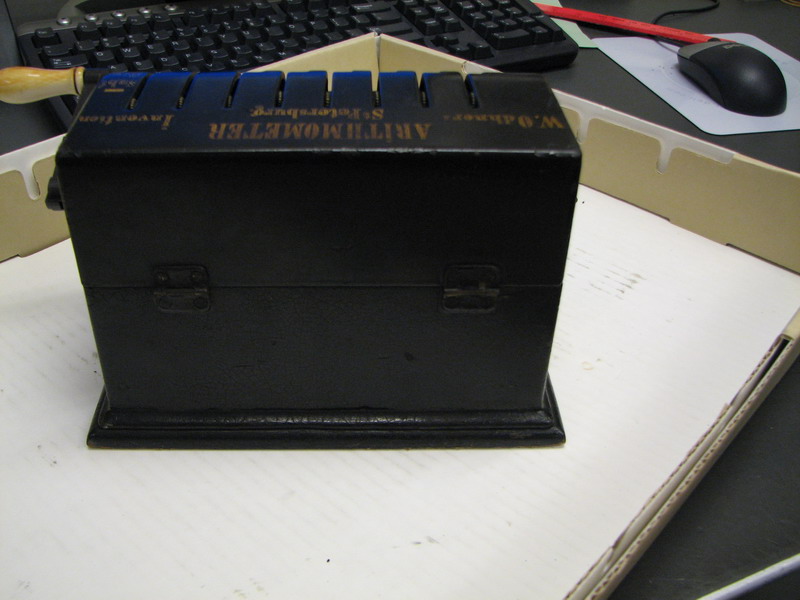
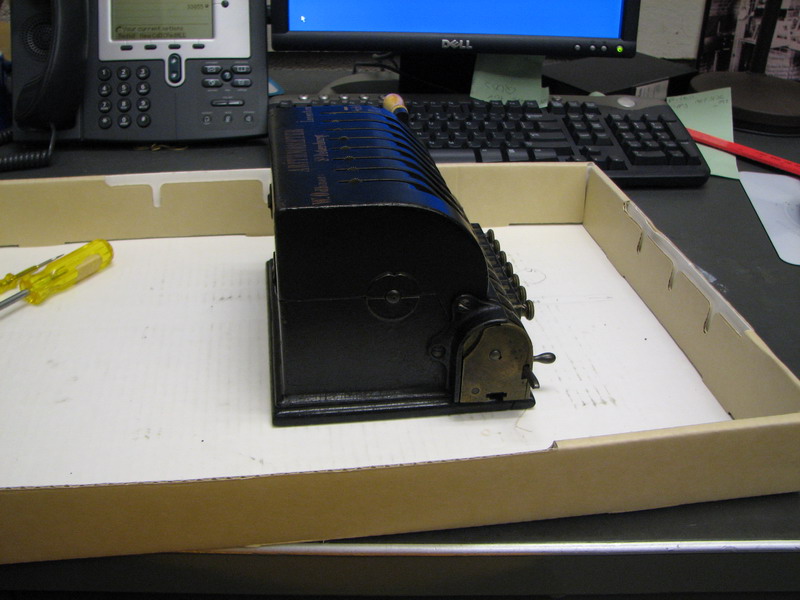
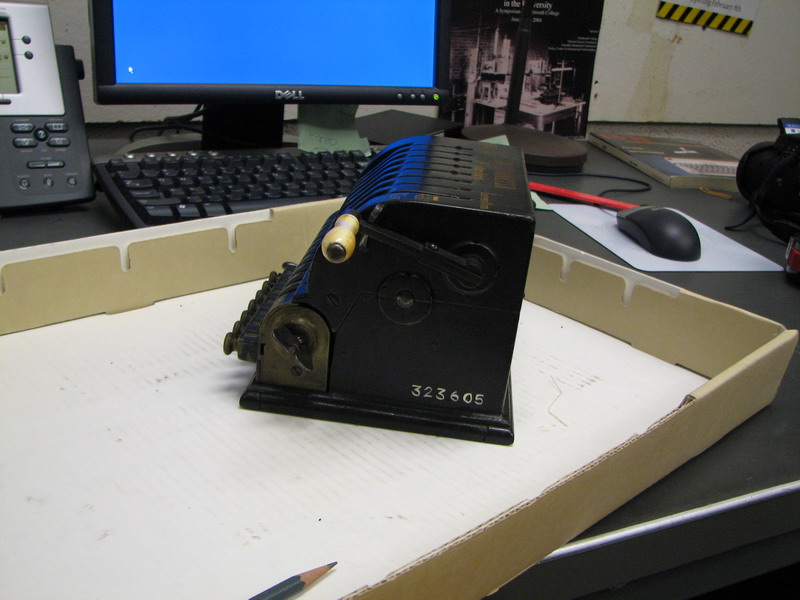
Notice the odd position of the crank in these early models. It is held up in the rest position of the machine, and clicks out of the slot by pulling the crank to the right.
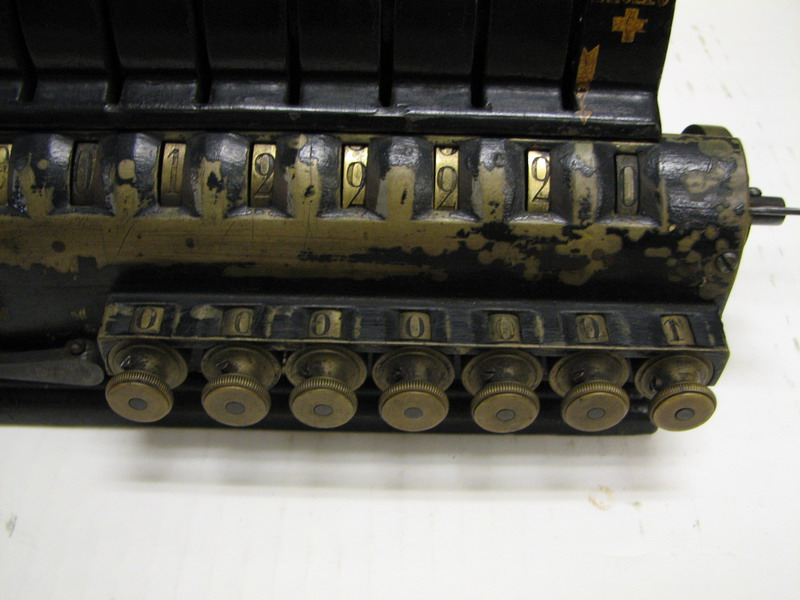
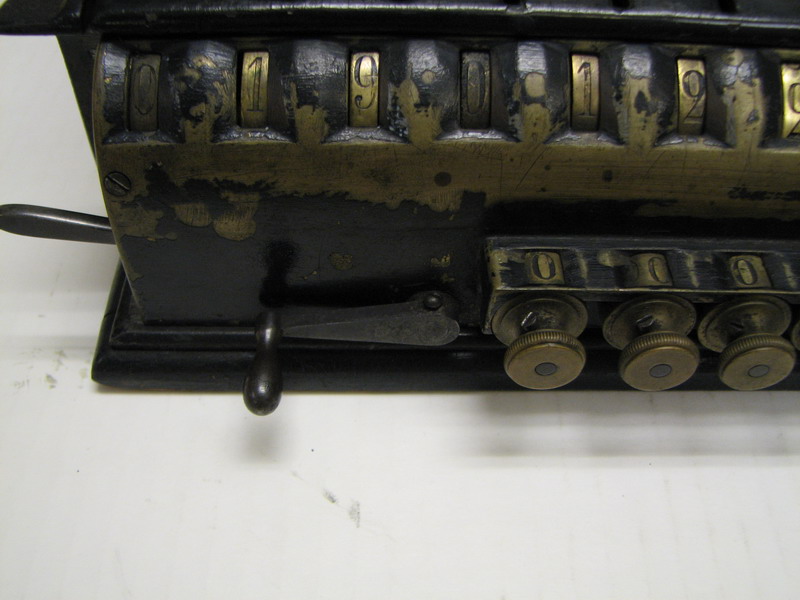
Counter register clearing by a lever at the front - a quarter turn clockwise will clear the counter register. The handle at the left is for unlocking the carriage.
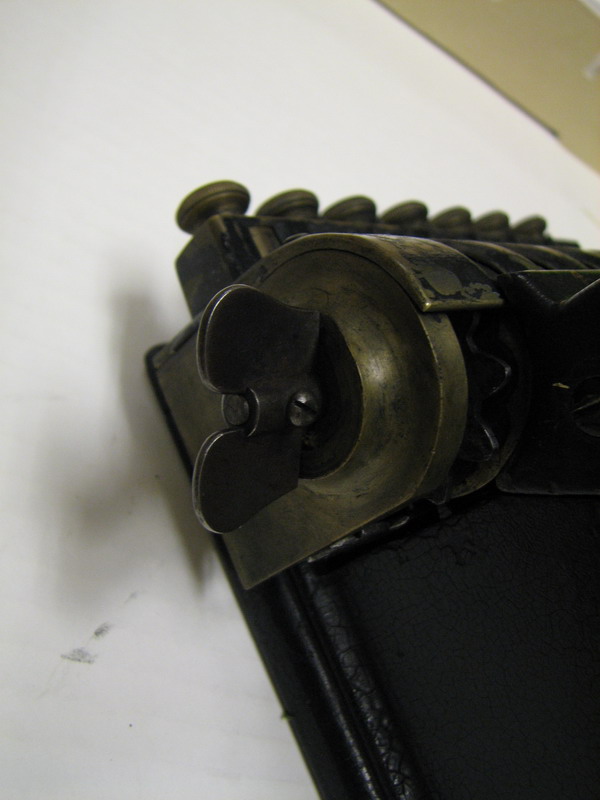
A familiar sight ...
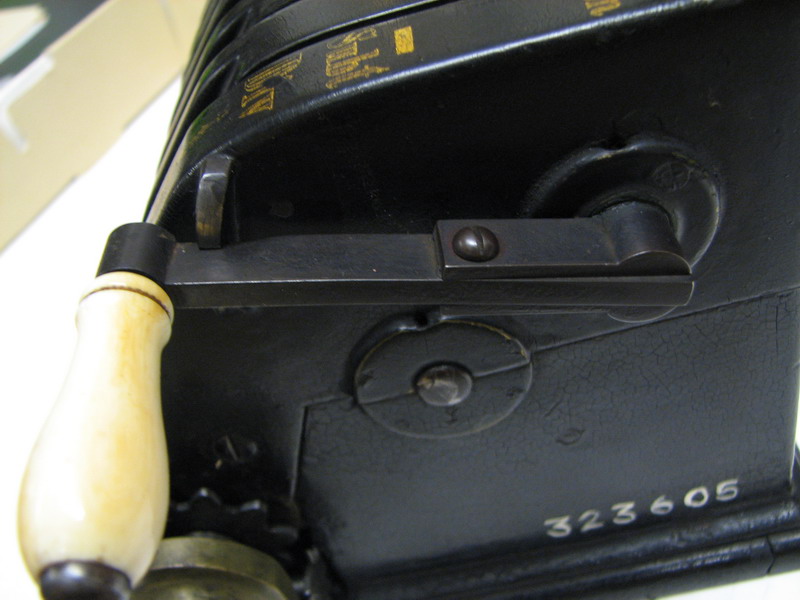
Detail of the mechanism of the spring-loaded crank.
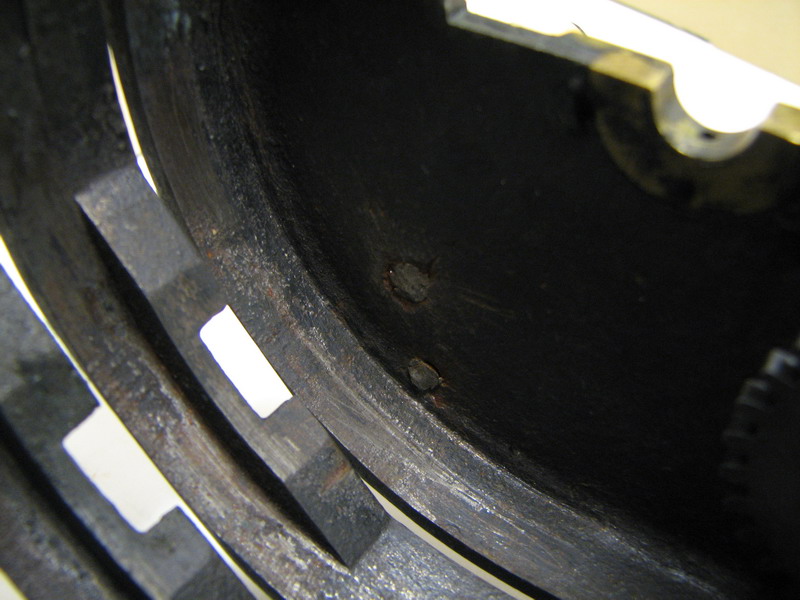
Riveted crank-holder.
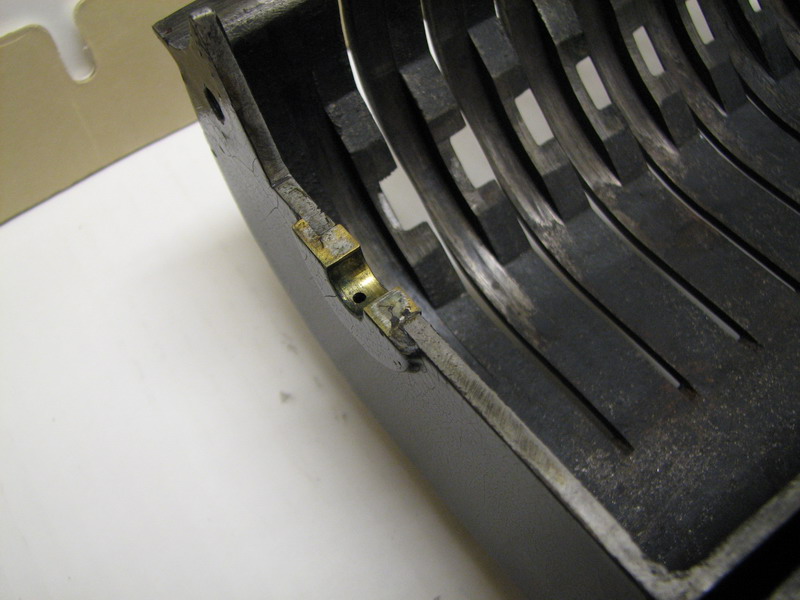
Soldered bronze bushing in the cast-iron housing.
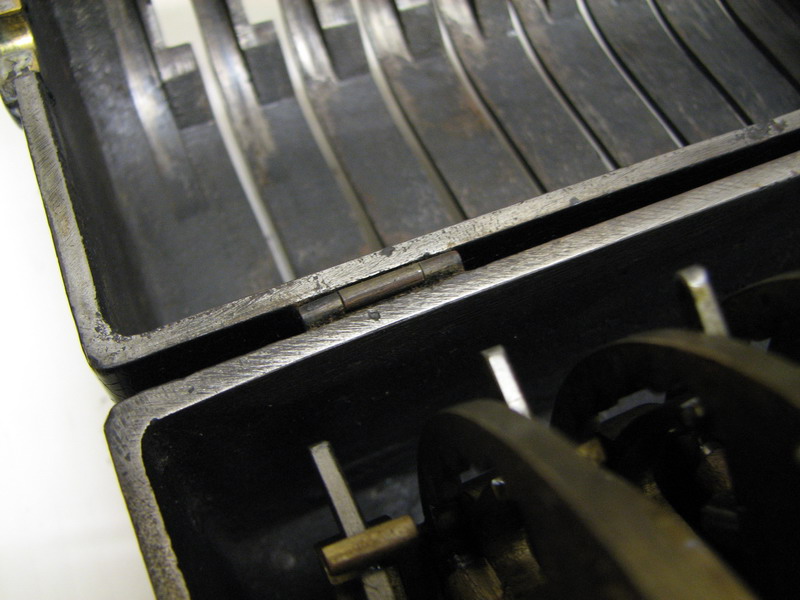
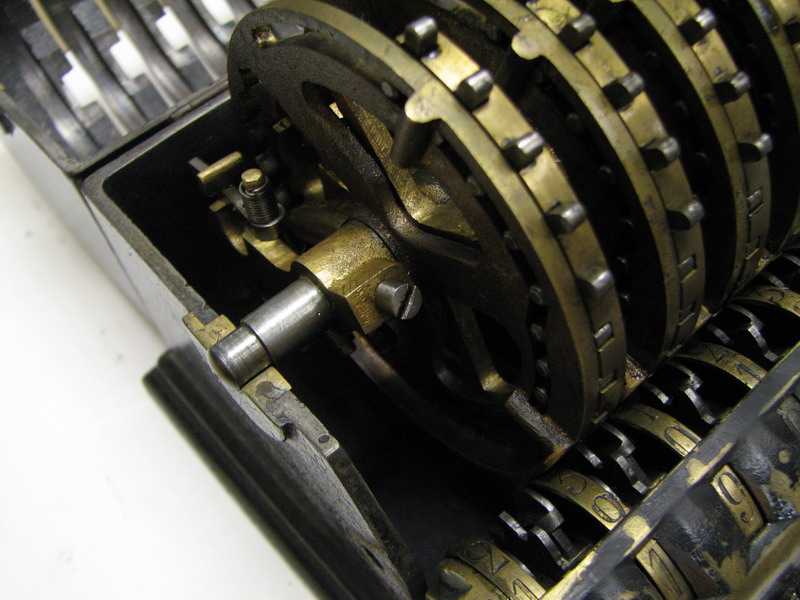
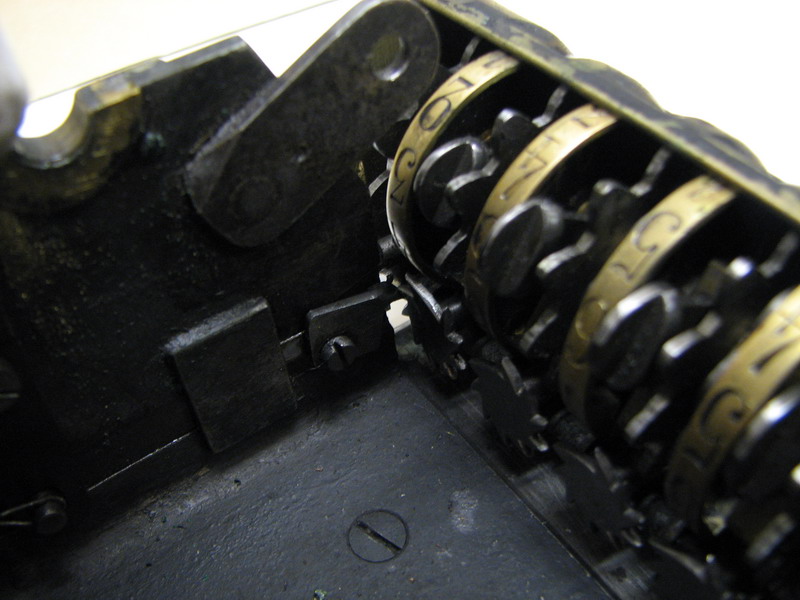
This arm, operated by an eccentric on the main axle of the machine, operates the counter register. Doing it that way has for effect that the register always counts up, regardless of the sense of the rotation of the machine.
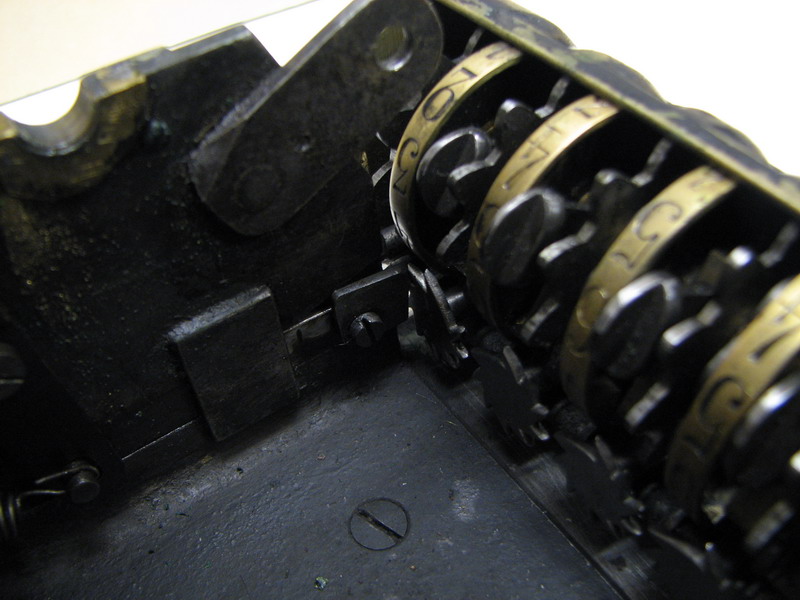
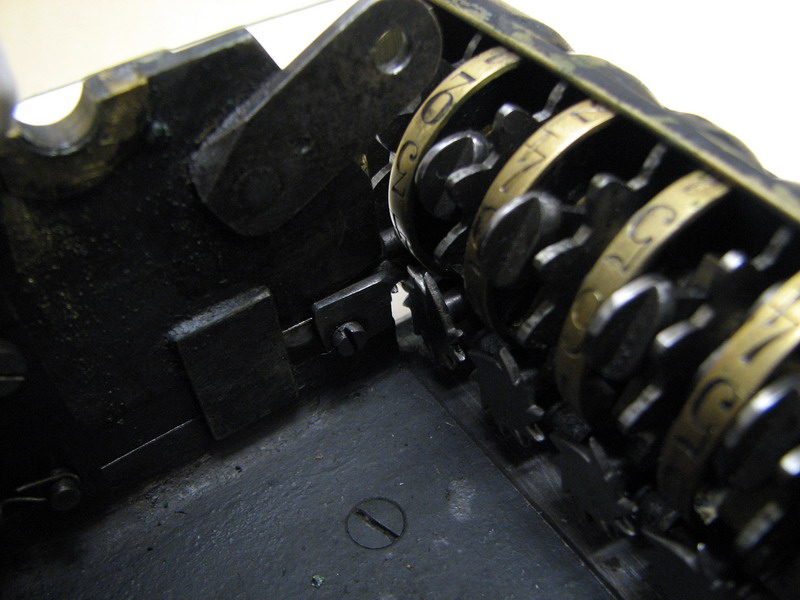
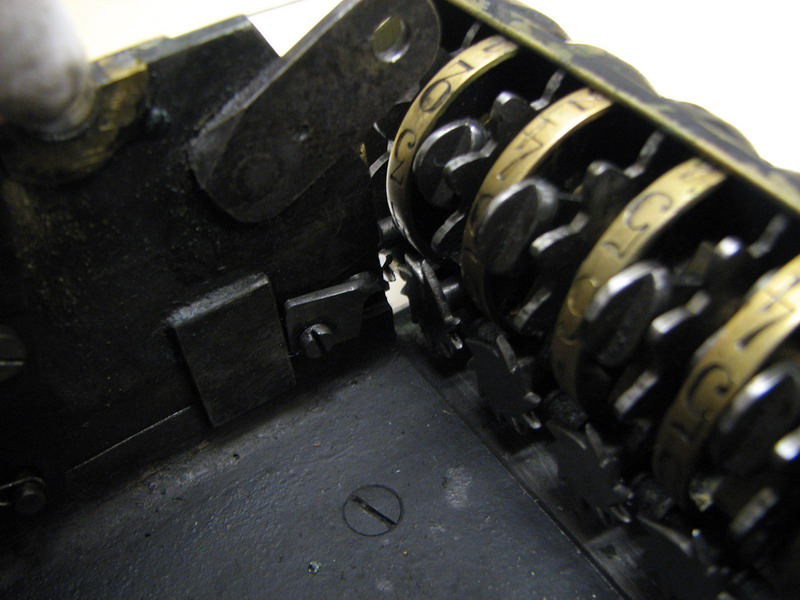
One tooth missing makes sure the counter register never counts higher than 9.
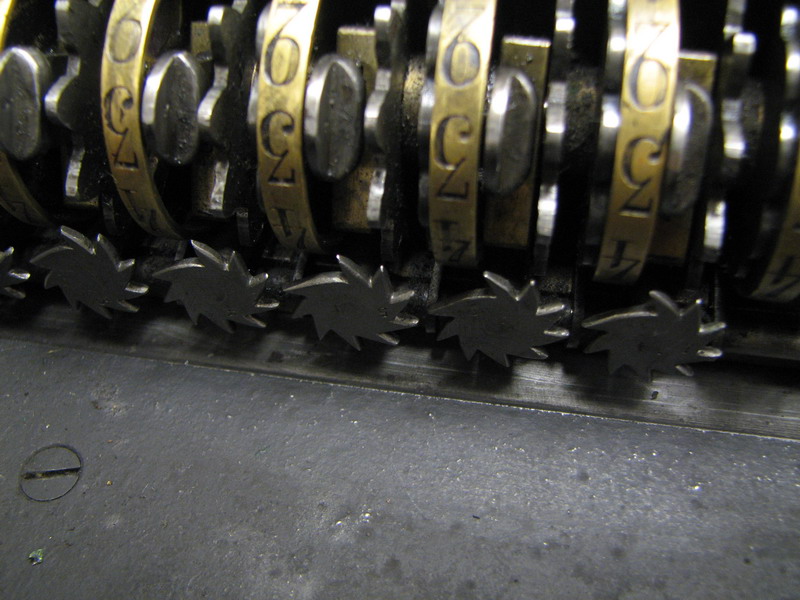
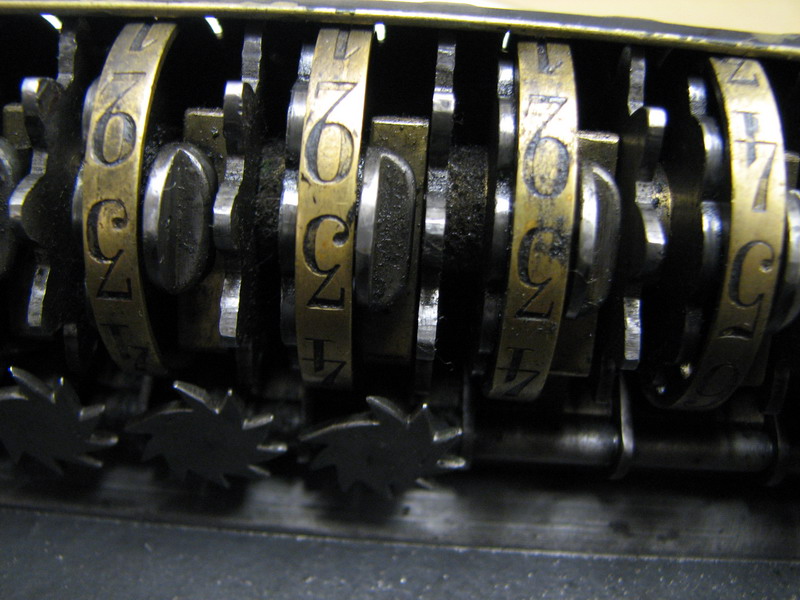
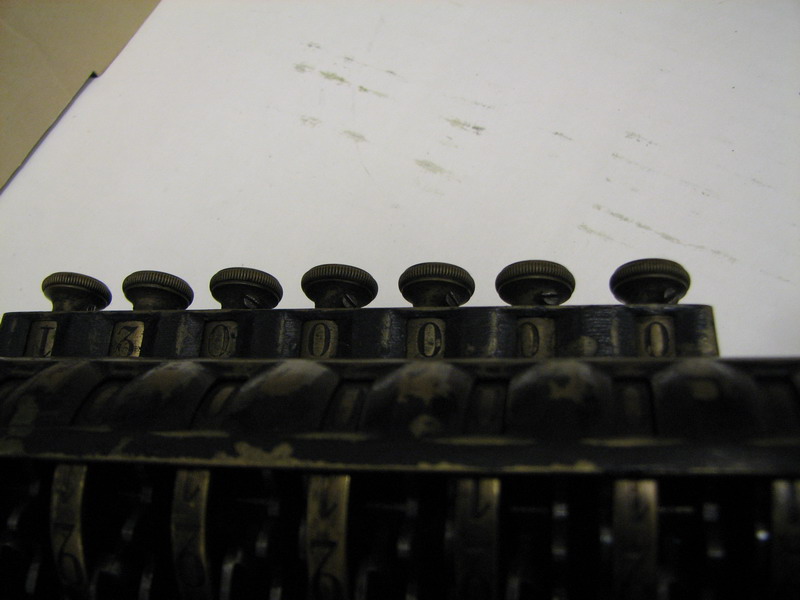
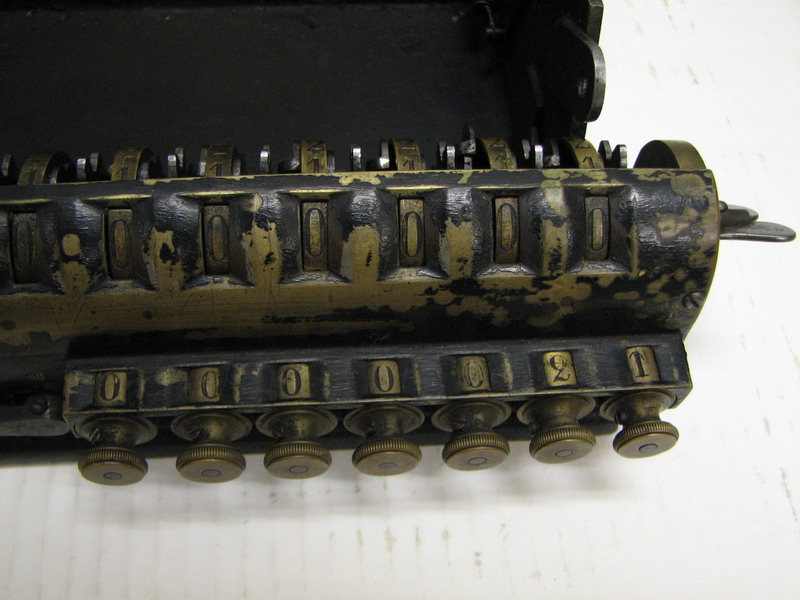
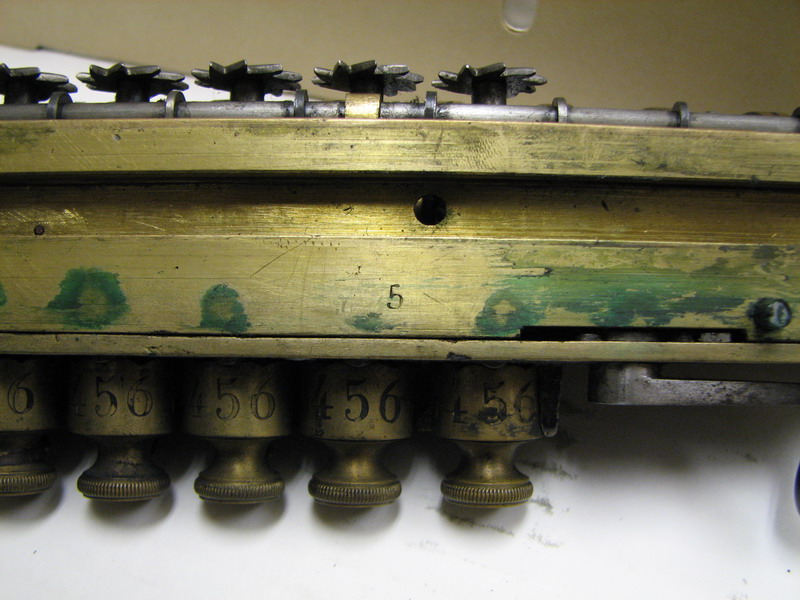
The bottom of the carriage with the carriage lock on the right, and a clearly visible "5" - probably the serial number of the machine.
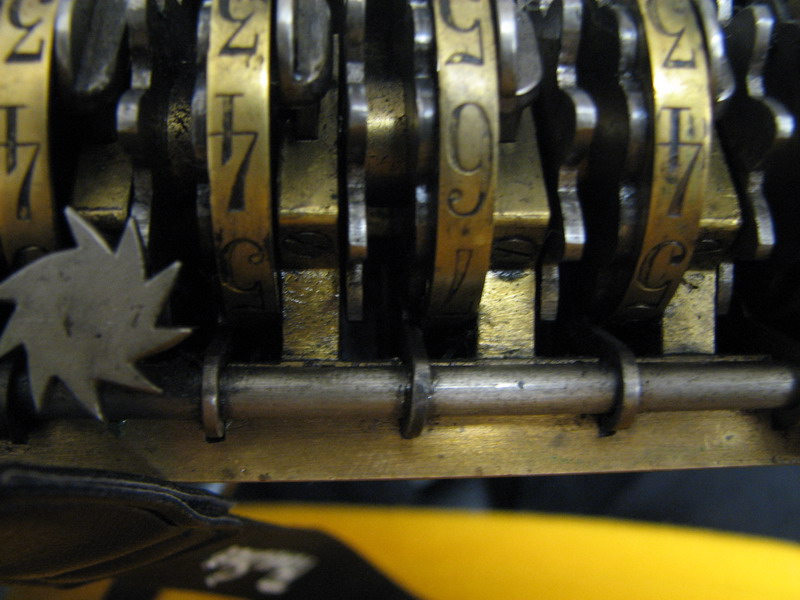
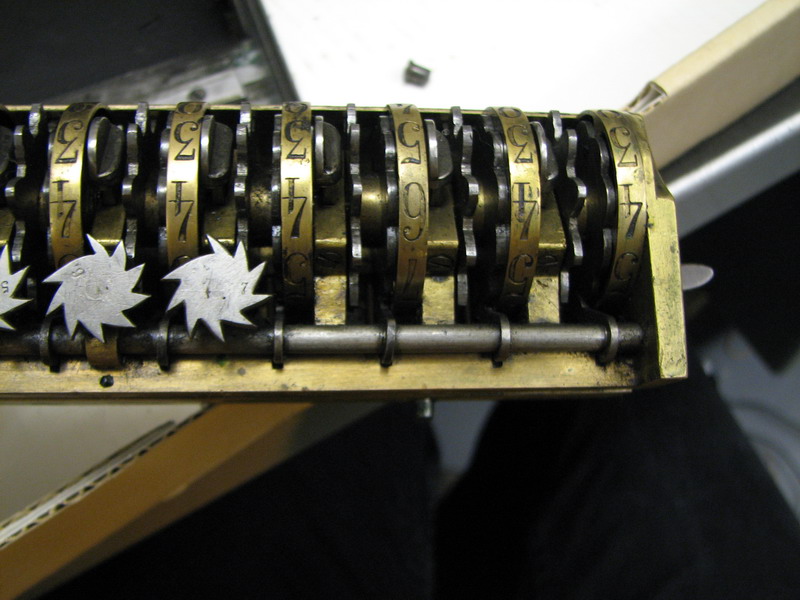
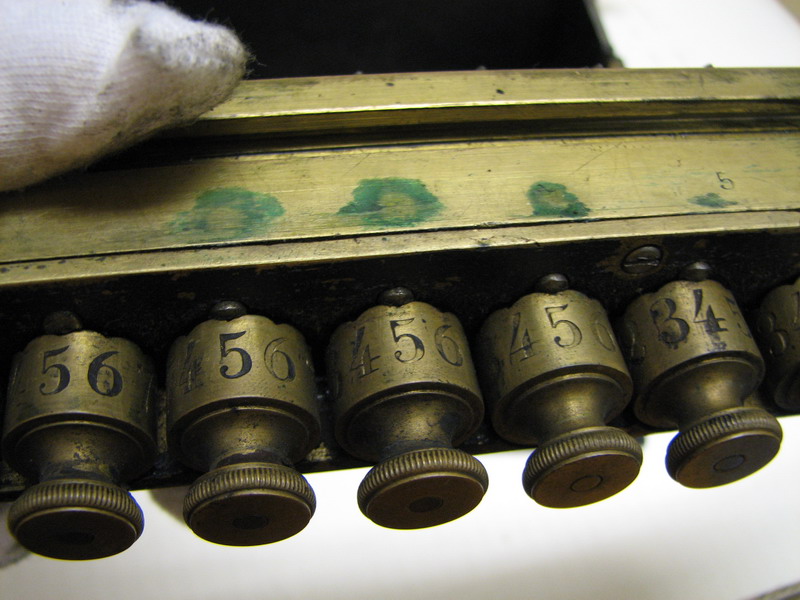
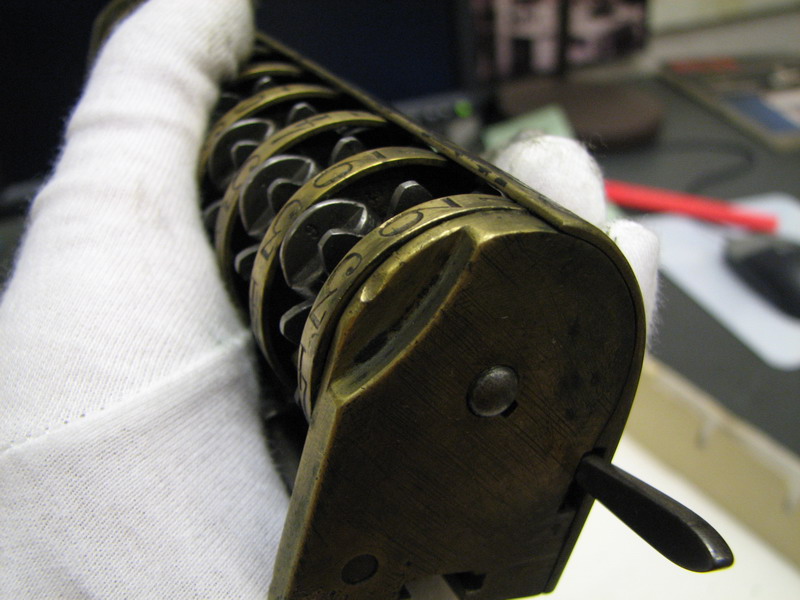
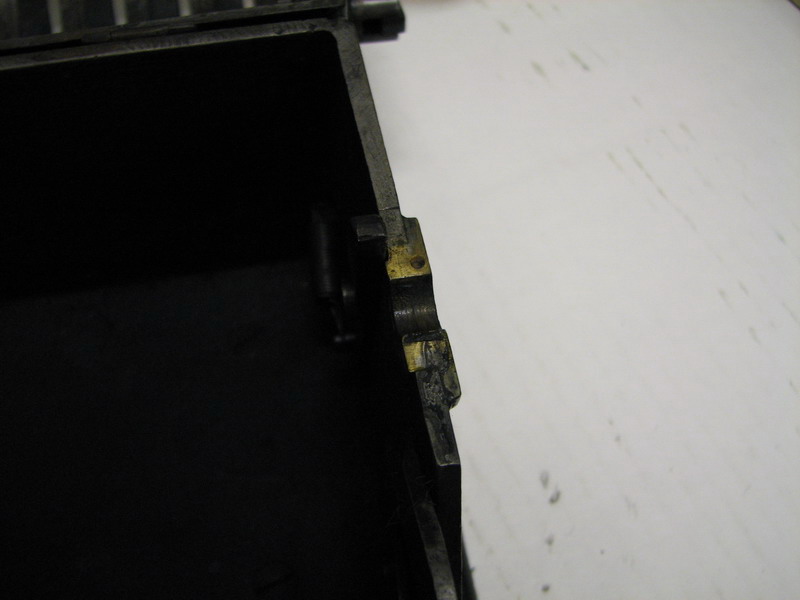
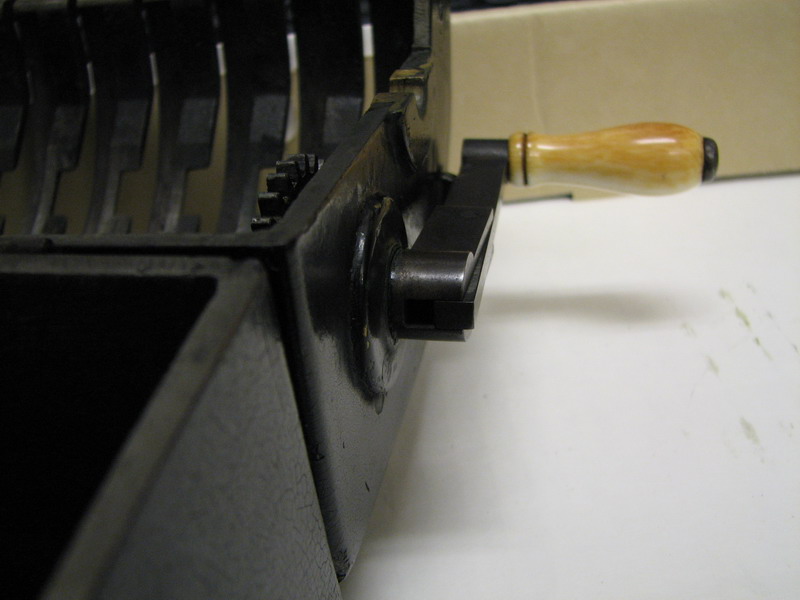
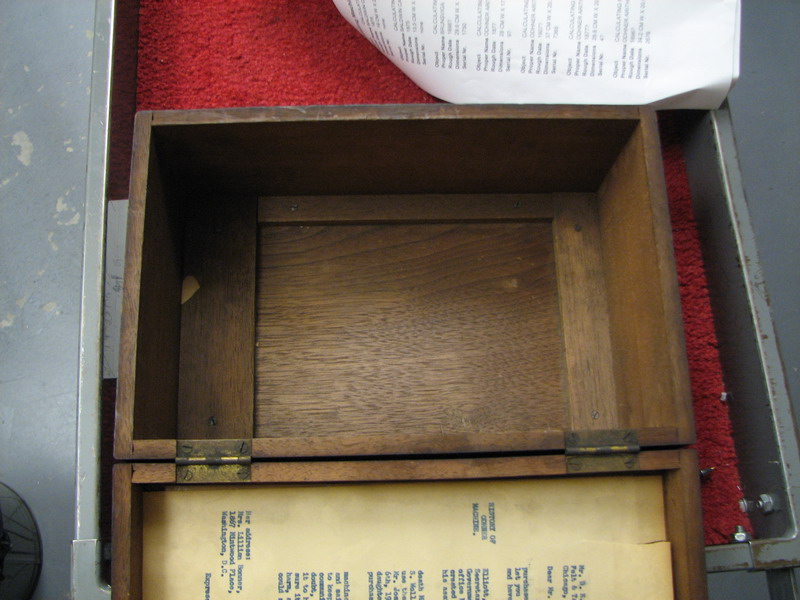
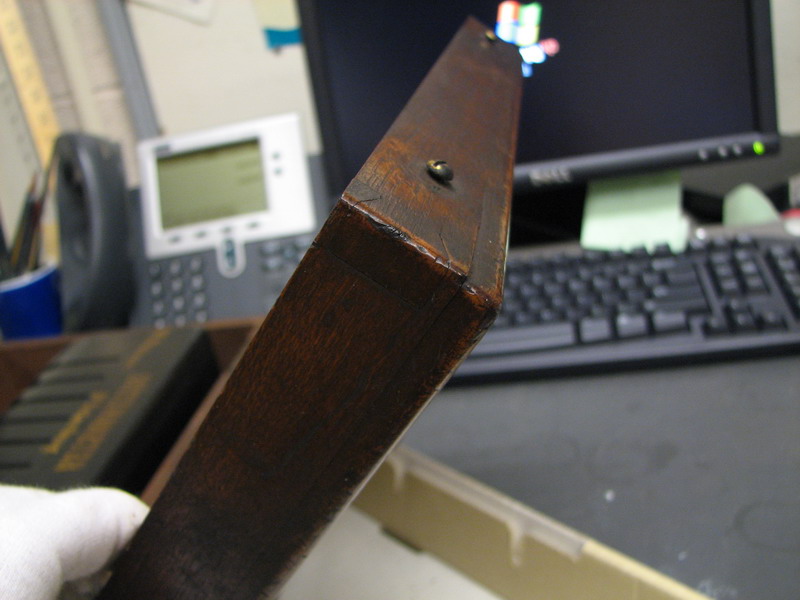
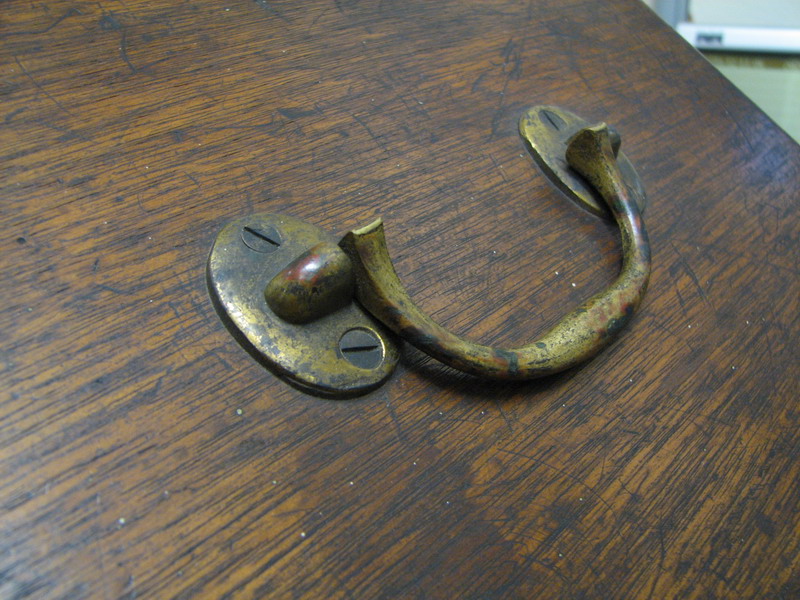
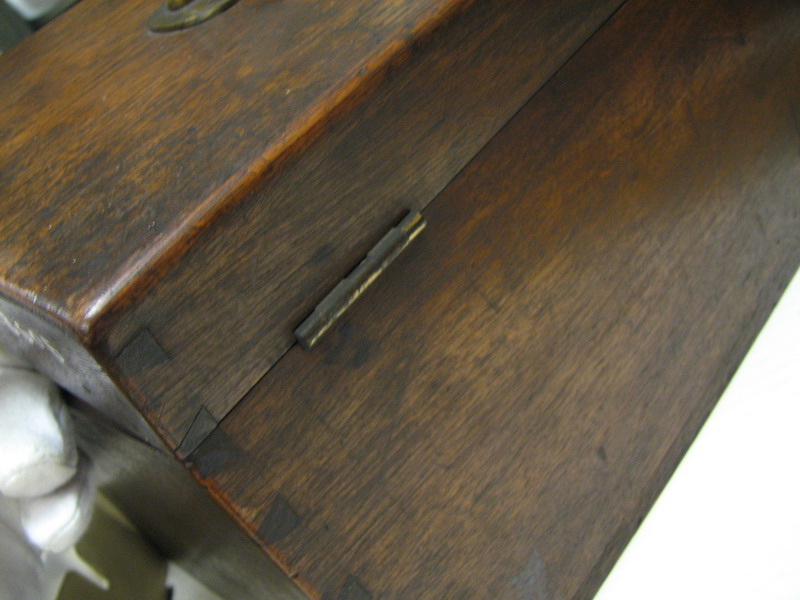
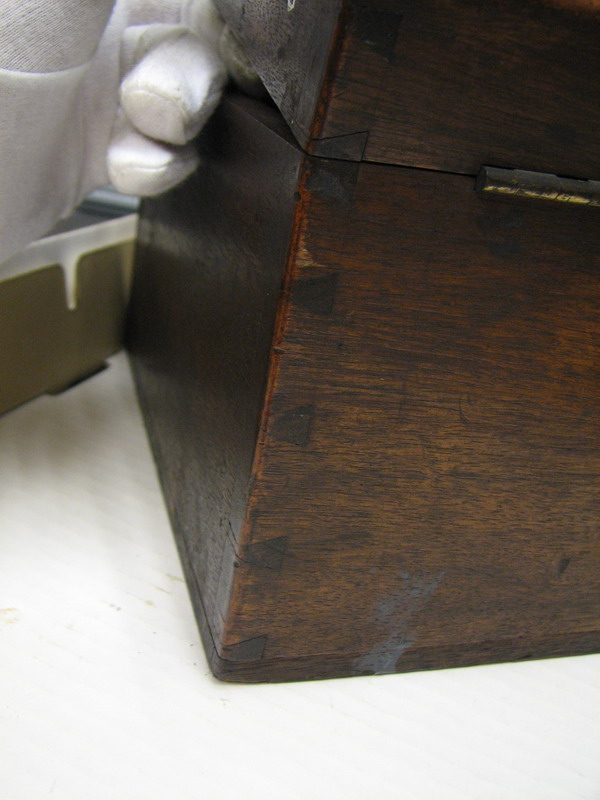
The other machine (serial number 9, used by McCoy, and gifted to the Smithsonian Institution in 1931 by McCoy's widow) has no box. It was cleaned and repainted earlier during last century, and even though this restoration is also starting to show its age (some cracking and flaking paint), it basically still looks brand new.
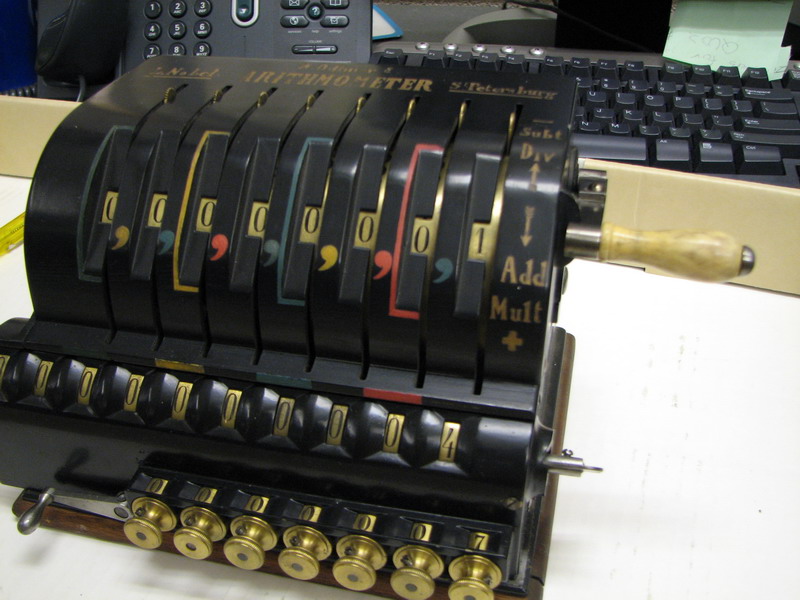
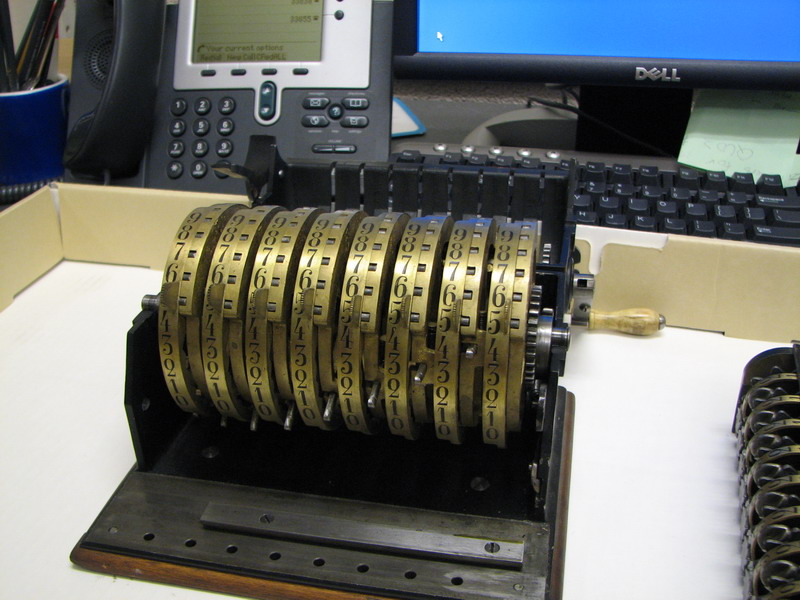
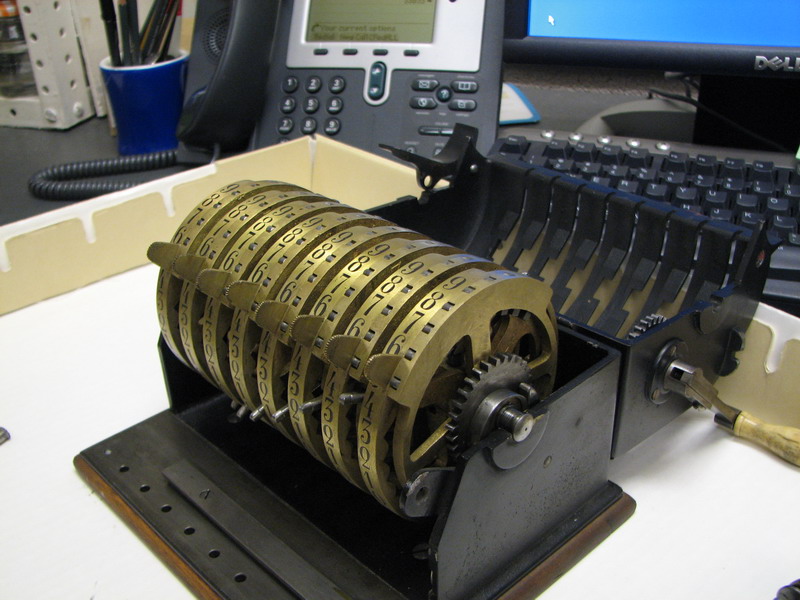
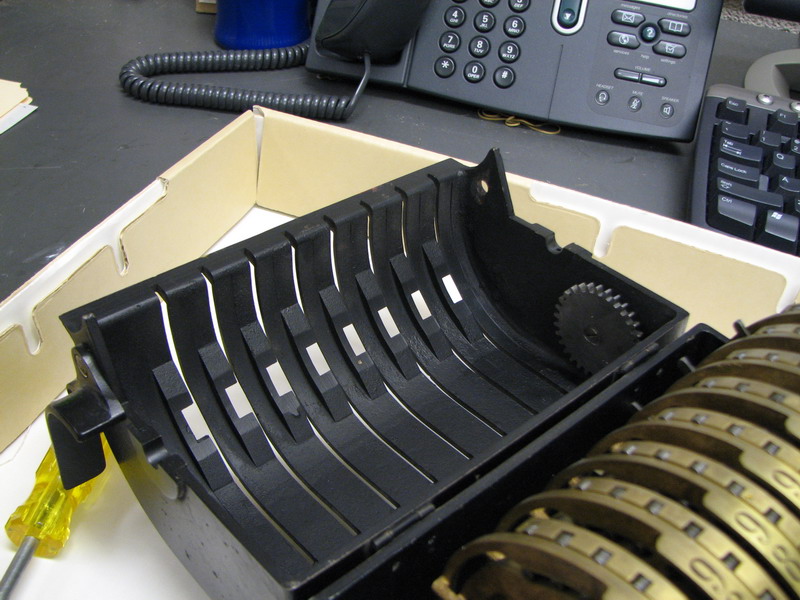
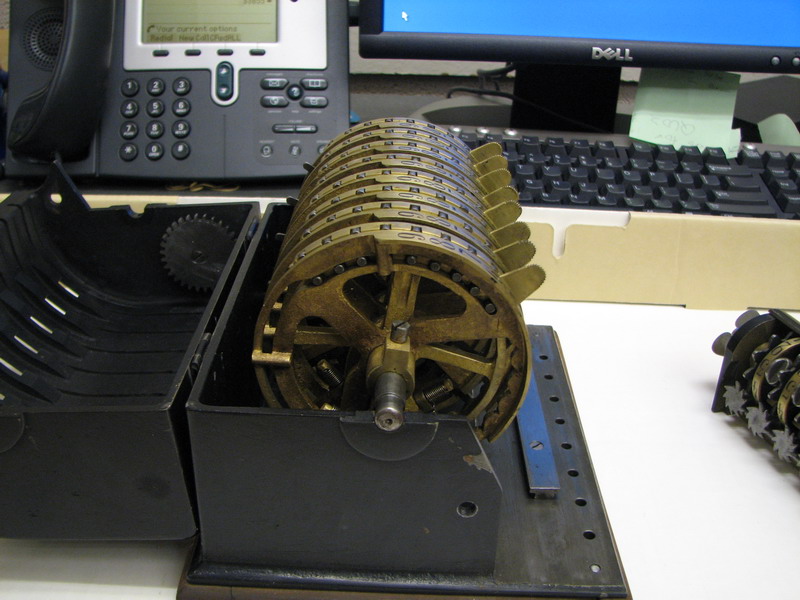
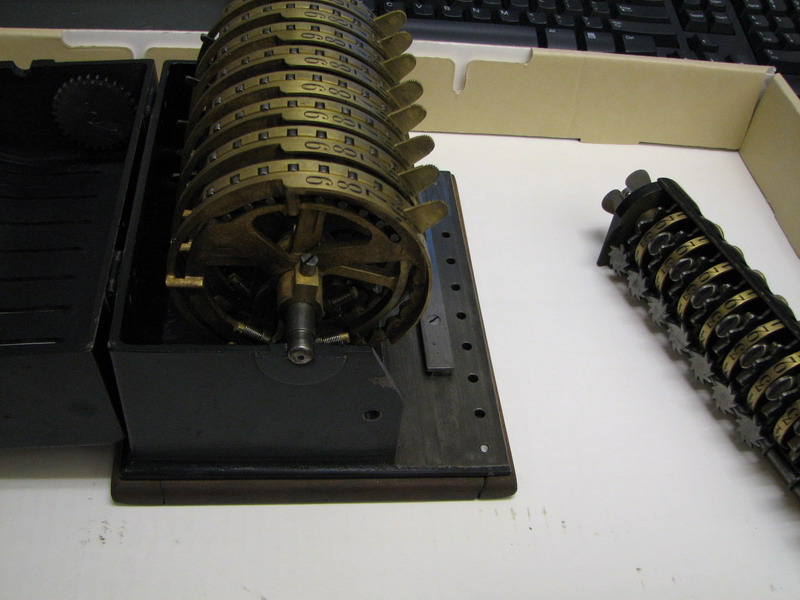
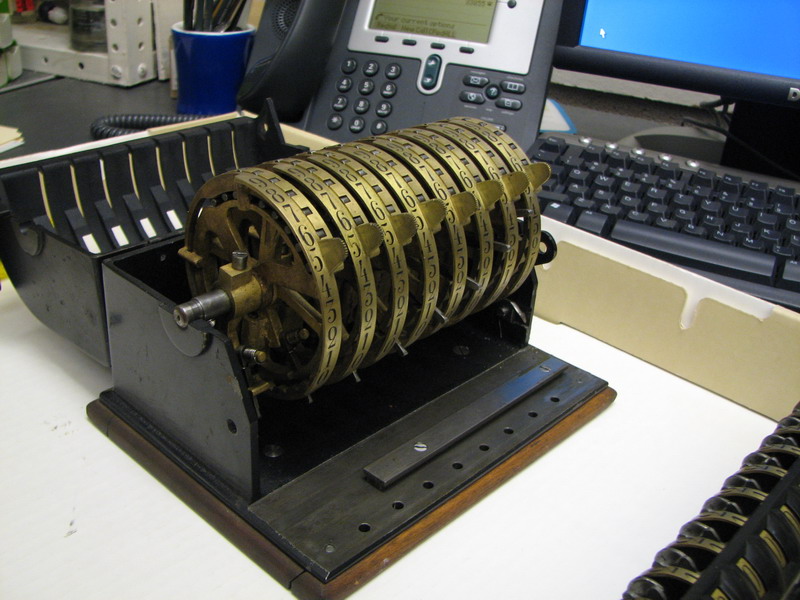
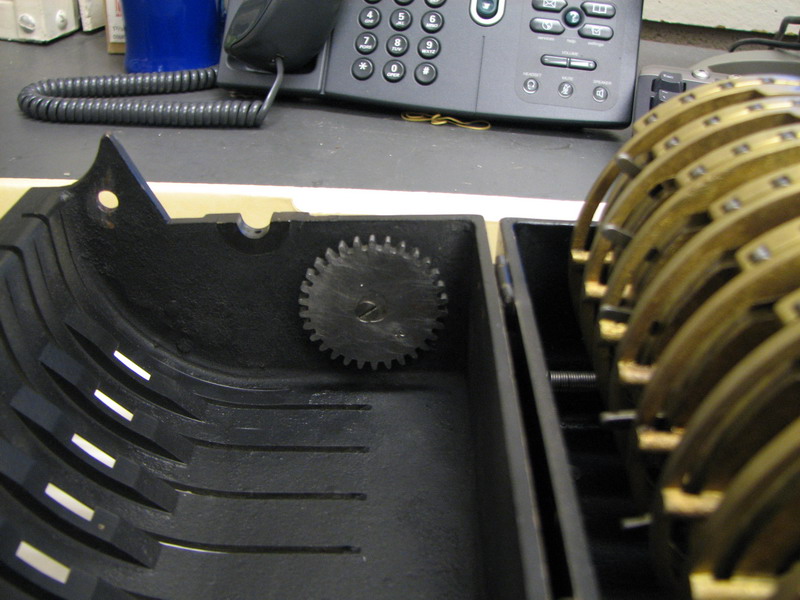
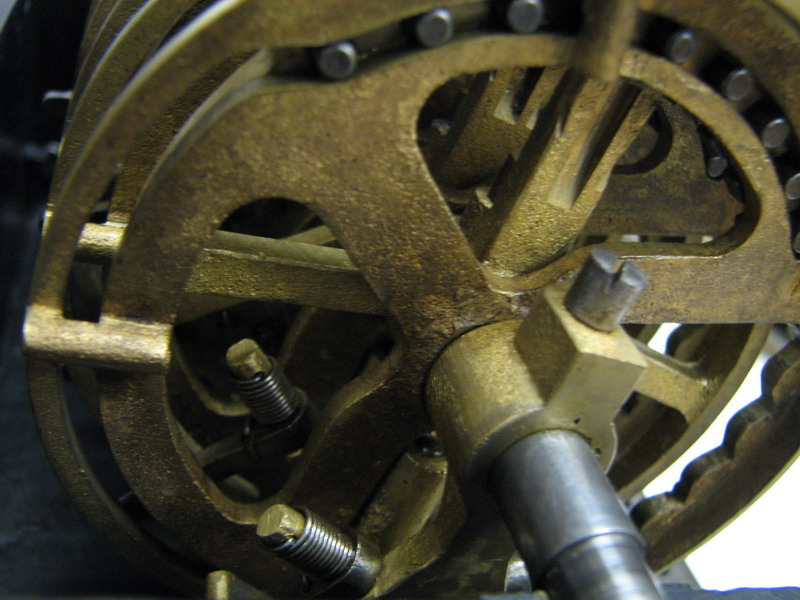
Notice how the pins have rounded protrusions
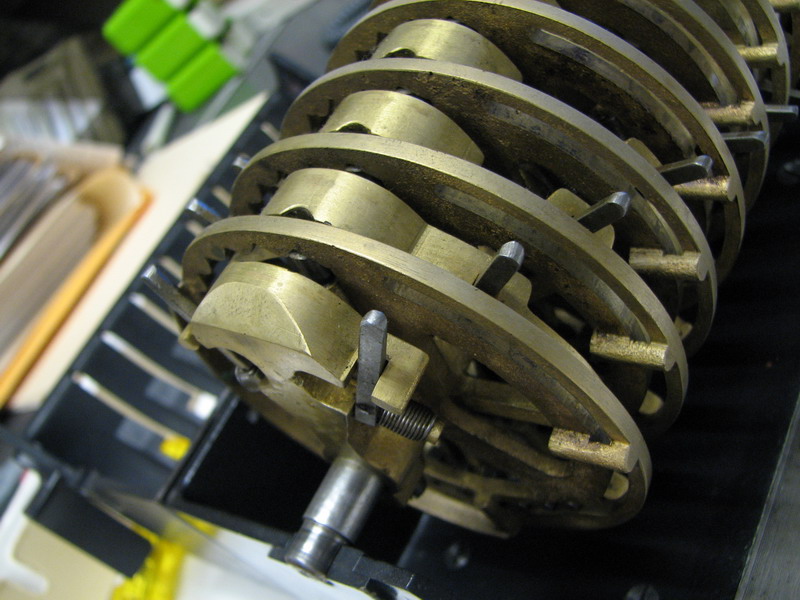
The actual pinwheel disks (that are more like sectors instead of actual disks) are very far apart in this pinwheel cylinder, and quite wide, because the setting rings have indicators with numbers incorporated, an idea that would be recycled much later, e.g. in Lipsia, Hannovera and Marchant machines.
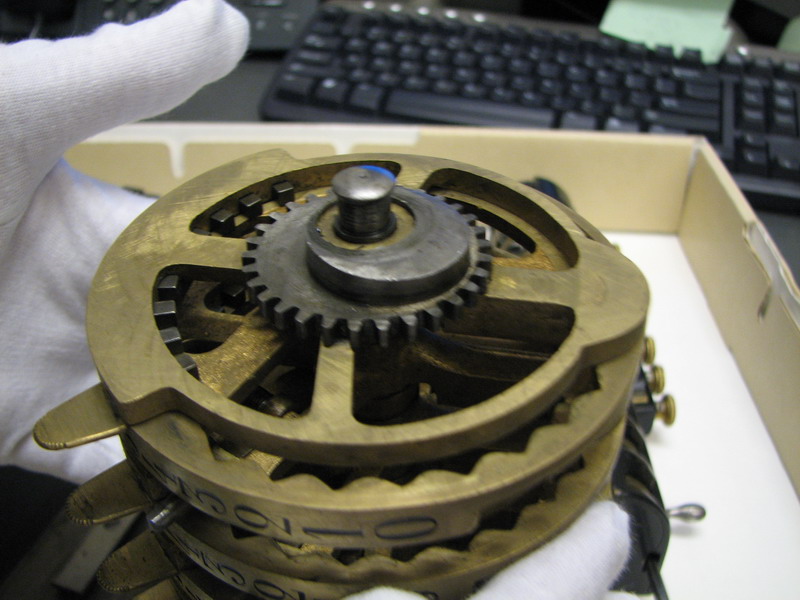
The eccentric for operating the counter mechanism.
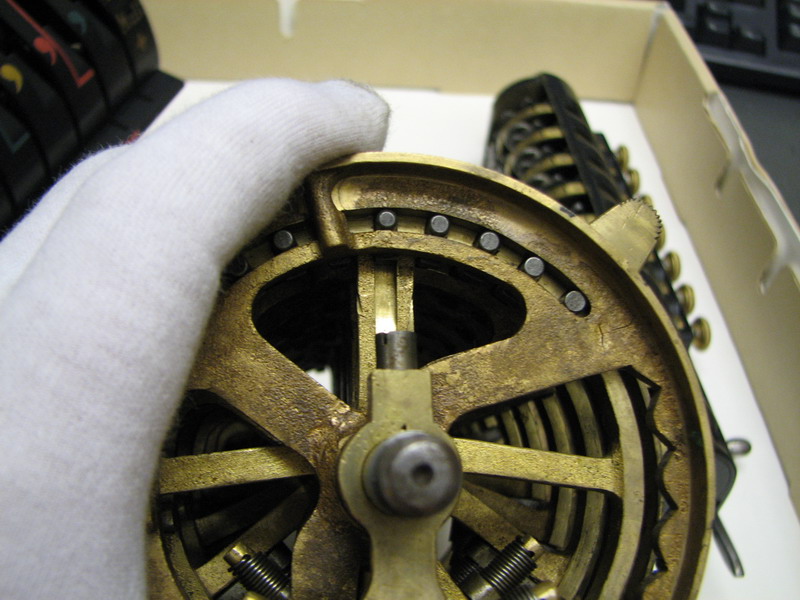
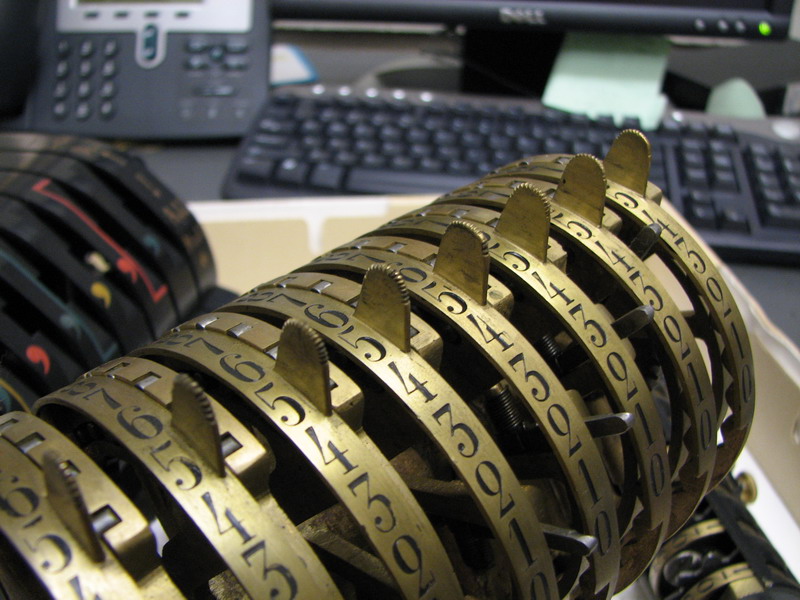
The setting rings are a work of art.
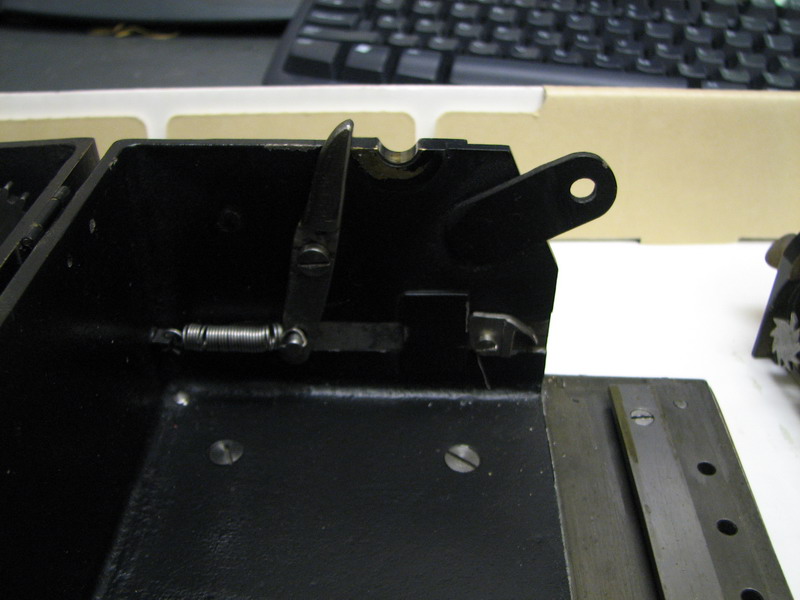
The counter mechanism.
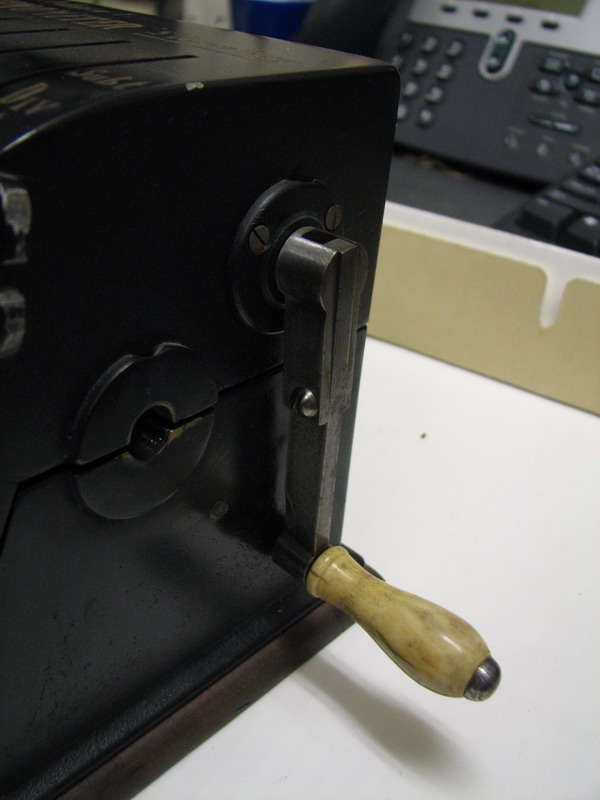
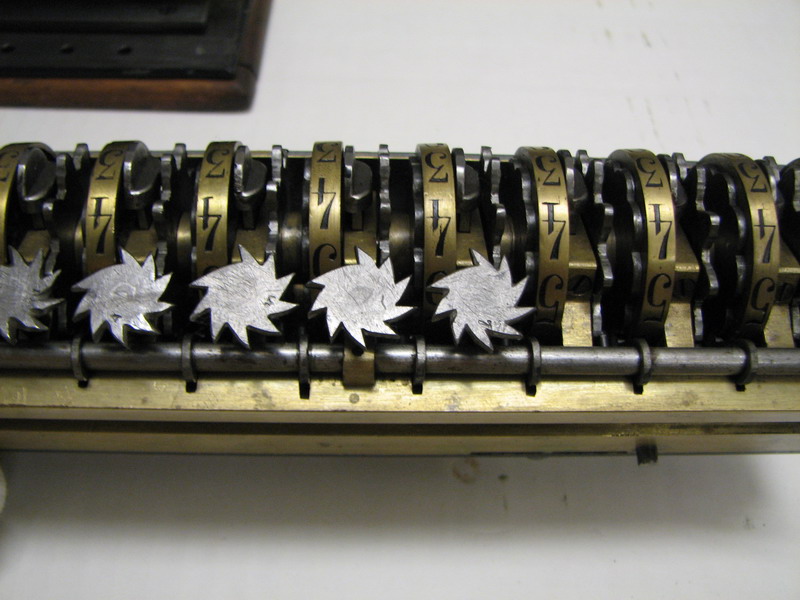
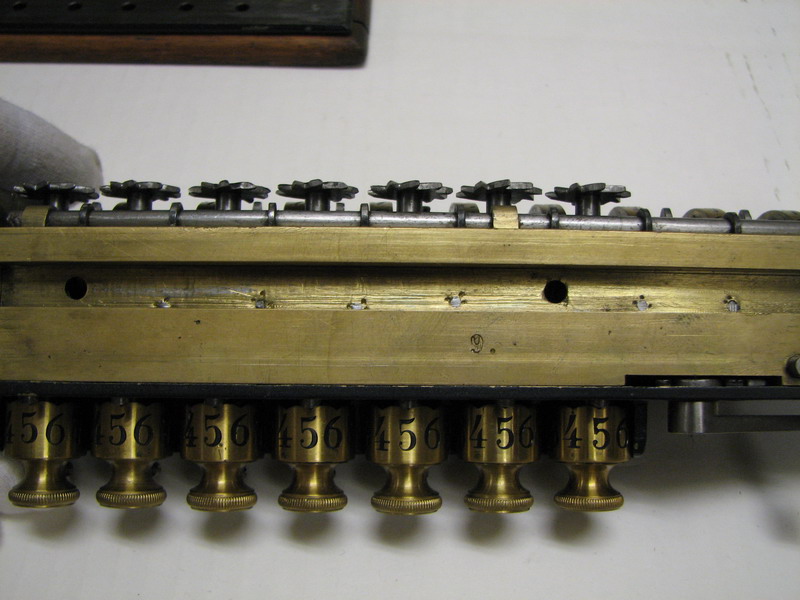
A stamped "9." on the bottom of the carriage. The serial number of this machine, most likely.
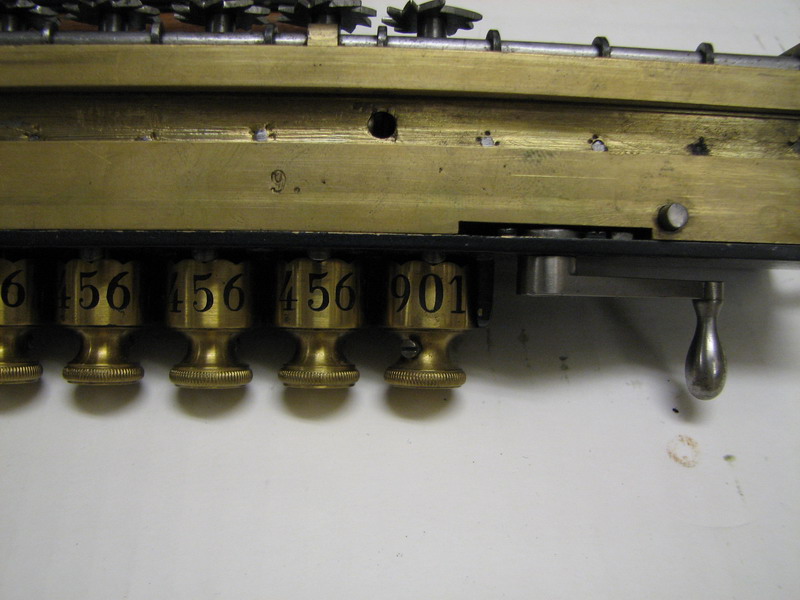
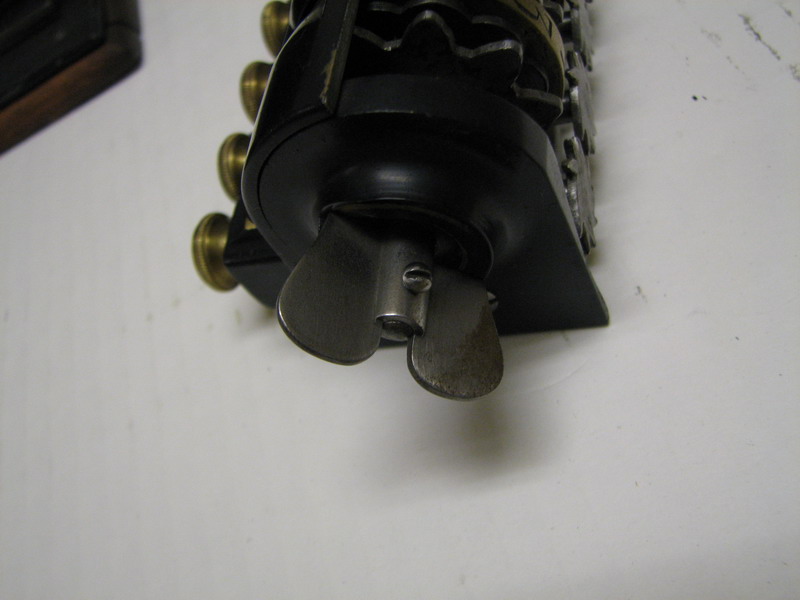
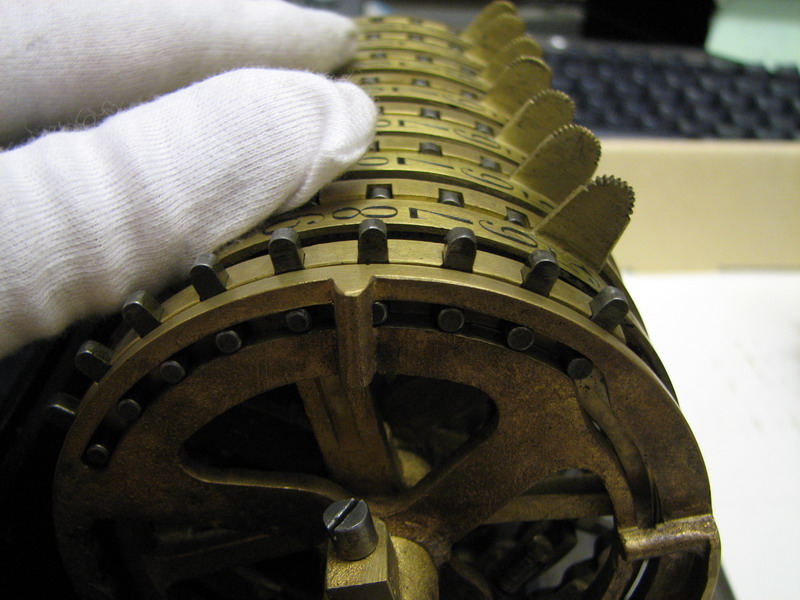
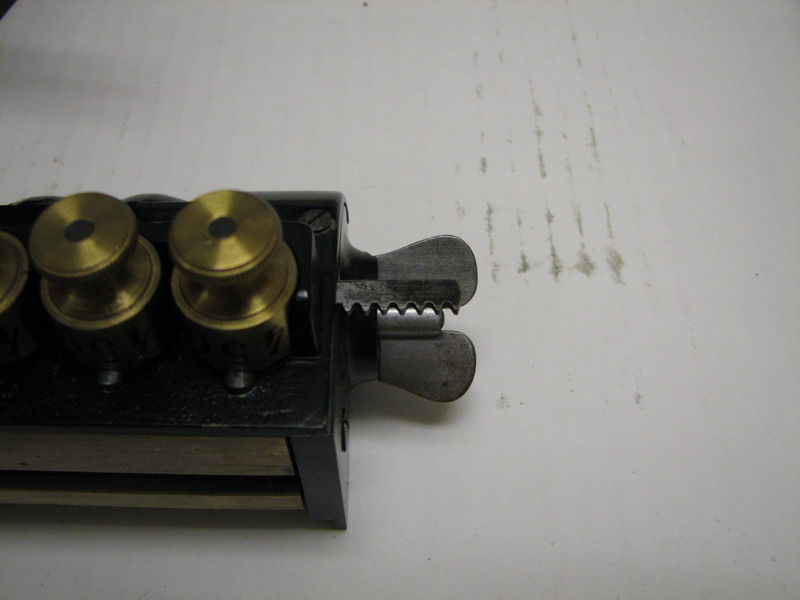
The clearing comb for the counter register, and the elegant way of avoiding overshoot of the carriage, which can only be removed towards the right side of the machine.
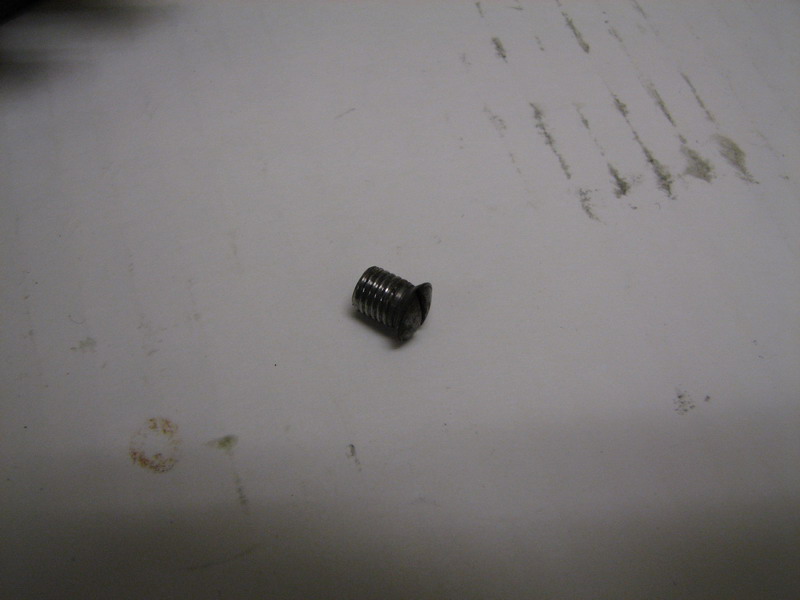
...and the single screw that holds the housing together.
As a small bonus, Dr. Kidwell also brought Baldwin's machine out of storage for us to look at.
A very sincere thank you to dr. Kidwell, the National Museum of American History and the Smithsonian Institution for this opportunity to have a much closer look at these truly iconic machines, and to touch and feel some true mechanical calculator history.
